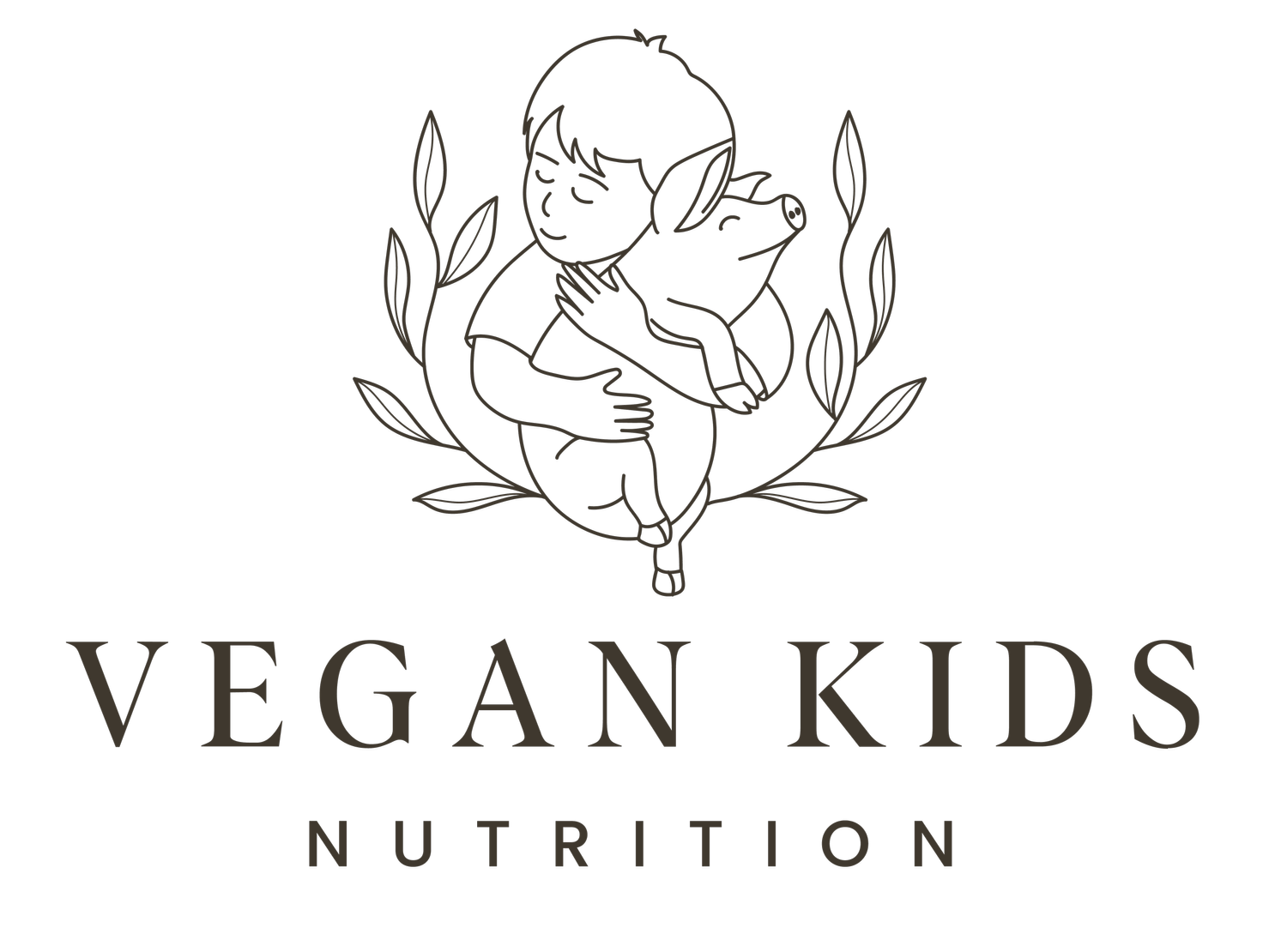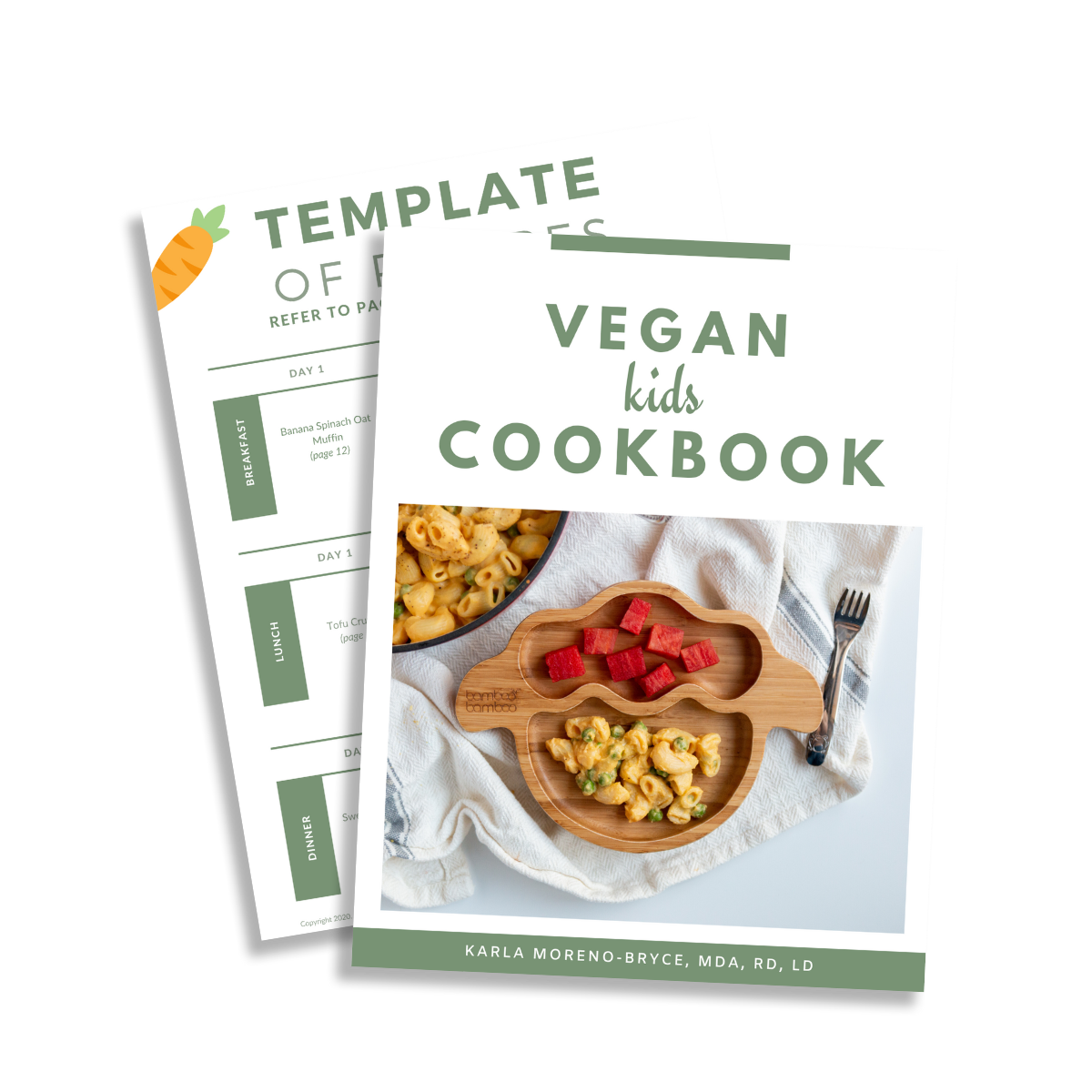When my daughter began to show signs of picky eating, I remember she never ate her orange-colored veggies. These were sweet potatoes, carrots, butternut squash. No matter how I prepared them, seasoned, or cut these vegetables, she simply showed no interest in wanting to engage with them.
I wasn’t worried about her selectivity, after all most kids go through a level of picky eating during their early childhood, but I still wanted to make sure these foods were part of her diet.
An approach I've always followed at home is to allow my daughter to lead at meal times. I try my best to not pressure her to eat anything that she doesn’t yet feel comfortable eating and I do this intentionally because I know that she will try it on her own time, when she’s ready. And this is something I dive into more detail in Episode 9 of the Vegan Kids Nutrition Podcast.
The Story of Our Family’s Waffle Recipe and Managing Picky Eating
Waffles have always been a favorite breakfast for my vegan family. It's something we typically have every weekend just because they're easy to make, a preferred food for everyone in the family, and leftovers work great for busy mornings!
So, I decided to take my waffle recipe and add pumpkin puree.
Why pumpkin? Well, pumpkin is a great nutrient-dense food which is perfect for a vegan picky eater.
I always have canned pumpkin puree in my pantry, typically for muffins, but decided to add some to our waffles to meet certain key nutrients for my selective vegan daughter.
Now, I want to be clear that in no way did I add pumpkin to our waffles with the intention of “hiding” a vegetable. This approach is not something I recommend for vegan parents with picky eaters because it can lose trust in your relationship and their relationship with food, and potentially make picky eating behaviors worse. Rather, I made pumpkin puree just a part of the recipe and was honest with my daughter that I added it.
Now, these vegan pumpkin waffles have become a weekend favorite and one that helps me feel reassured my daughter is meeting several vitamins and minerals to support her growth.
Benefits of Including Pumpkin in Your Vegan Child’s Diet
Here are a few of my favorite benefits of including pumpkin in your meal planning that can benefit your child’s vegan diet.
1. Helps meet Vitamin A needs
Pumpkin is a great source of beta carotene, a pigment that gives vegetables their bright orange color. Beta carotene then gets converted to Vitamin A in the body. Most vegan children who have signs of picky eating or are selective with their food don’t get enough of Vitamin A from their diet. And Vitamin A is needed to help maintain a healthy immune system, is important for normal vision, and of course supports proper growth and development. By including pumpkin in your vegan family's meals, it helps ensure that your children and family meet Vitamin A.
2. Considered a nutrient dense plant food
Like most plant foods, pumpkin offers an array of vitamins and minerals such as, Vitamin C, Vitamin K, potassium, and carbohydrates. Although it is not considered a high calorie food, which children require during early childhood for proper growth and development, it can help meet carbohydrate requirements that can add up to meeting their calorie needs for the day.
3. Versatile in cooking
Pumpkin is also one of the most versatile squash in the kitchen. It can be used in savory or sweet dishes. And pumpkin can also be a great option as an egg or butter substitute in baking. I've used smashed pumpkin or canned pumpkin puree to replace eggs in recipes. About 1/4 cup or 3 tablespoons of pumpkin puree can substitute one egg for baking when making a vegan recipe. Cookies have been my favorite way of adding pumpkin puree. It adds moisture to the recipe and a bit of nutrition.
If your family is new to veganism or early in your transition to switch to a vegan diet, substituting pumpkin in your family’s favorite baked goods can be a great first start in making the switch while also contributing to their nutrition.
4. Contributes to meeting fiber
While a vegan diet can naturally be high in fiber, adding pumpkin to your child’s diet can contribute to meeting their fiber needs for the day. This is especially true for picky eaters who may prefer foods that are lower in fiber and for older school-aged children or vegan teens who have higher fiber needs compared to young children. As children and adolescents grow, their fiber needs increase.
Vegan pre-teens between the ages of 9 - 13 years old need about 26 - 31 grams of fiber per day. Adequate fiber intake helps your child maintain regular bowels but also provide heart-health benefits. Including pumpkin in meals and snacks can be a very practical way of contributing to your child’s fiber needs for the day.
5. Can be accessible and cost effective
Pumpkin can sometimes be considered as a Fall-season vegetable only but if canned pumpkin puree is available in your area, you can get it year round. This makes including pumpkin in your vegan family’s meals a lot easier and cost effective, helping feeding your family to stay on budget.
Easy Ways to use Pumpkin
Here are just a few easy ways that you can use pumpkin or pumpkin puree in your vegan family meals, whether you have an early eater just starting solids or a young teenager:
Soup
Waffles
Pancakes
Pumpkin butter
Pasta sauce
On pizza
Empanada filling
Curry
Hummus
Smoothies
Lasagna filling
Muffins
If you’re looking for more strategies to feed your vegan picky eater, check out this blog post for ways that you can help them learn to like and eventually try plant foods.
Meet Your Vegan Kids Nutritional Needs
Grab the Vegan Kids Cookbook where it includes simple recipes to feed your vegan family, substitutions for food allergies, and a 3-Day Meal Plan so you know exactly what to offer to support your child’s growth on a vegan diet.








